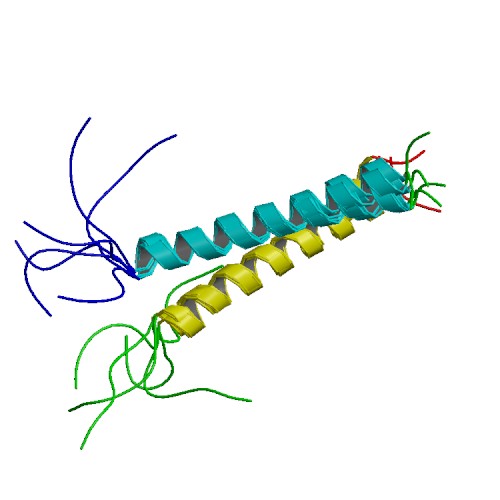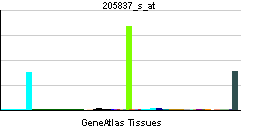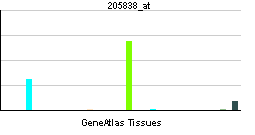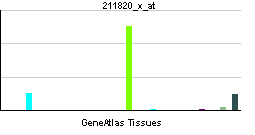GYPA
| Glycophorin A (MNS blood group) | |||||||||||||
|---|---|---|---|---|---|---|---|---|---|---|---|---|---|
 PDB rendering based on 1afo. | |||||||||||||
| |||||||||||||
| Identifiers | |||||||||||||
| Symbols | GYPA ; MN; MNS; CD235a; GPA; GPErik; GPSAT; GpMiIII; HGpMiIII; HGpMiV; HGpMiX; HGpMiXI; HGpSta(C) | ||||||||||||
| External IDs | Template:OMIM5 HomoloGene: 48076 | ||||||||||||
| |||||||||||||
| RNA expression pattern | |||||||||||||
 | |||||||||||||
 | |||||||||||||
 | |||||||||||||
| More reference expression data | |||||||||||||
| Orthologs | |||||||||||||
| Template:GNF Ortholog box | |||||||||||||
| Species | Human | Mouse | |||||||||||
| Entrez | n/a | n/a | |||||||||||
| Ensembl | n/a | n/a | |||||||||||
| UniProt | n/a | n/a | |||||||||||
| RefSeq (mRNA) | n/a | n/a | |||||||||||
| RefSeq (protein) | n/a | n/a | |||||||||||
| Location (UCSC) | n/a | n/a | |||||||||||
| PubMed search | n/a | n/a | |||||||||||
Glycophorin A (MNS blood group), also known as GYPA, is a human gene.[1] GYPA has also recently been designated CD235a (cluster of differentiation 235a).
Glycophorins A (GYPA) and B (GYPB) are major sialoglycoproteins of the human erythrocyte membrane which bear the antigenic determinants for the MN and Ss blood groups. GYPA gene consists of 7 exons and has 97% sequence homology with GYPB from the 5' UTR to the coding sequence encoding the first 45 amino acids. In addition to the M or N and S or s antigens, that commonly occur in all populations, about 40 related variant phenotypes have been identified. These variants include all the variants of the Miltenberger complex and several isoforms of Sta; also, Dantu, Sat, He, Mg, and deletion variants Ena, S-s-U- and Mk. Most of the variants are the result of gene recombinations between GYPA and GYPB.[1]
References
Further reading
- Blumenfeld OO, Huang CH (1996). "Molecular genetics of the glycophorin gene family, the antigens for MNSs blood groups: multiple gene rearrangements and modulation of splice site usage result in extensive diversification". Hum. Mutat. 6 (3): 199–209. doi:10.1002/humu.1380060302. PMID 8535438.
- Blumenfeld OO, Huang CH (1997). "Molecular genetics of glycophorin MNS variants". Transfusion clinique et biologique : journal de la Société française de transfusion sanguine. 4 (4): 357–65. PMID 9269716.
- Johnson ST, McFarland JG, Kelly KJ; et al. (2002). "Transfusion support with RBCs from an Mk homozygote in a case of autoimmune hemolytic anemia following diphtheria-pertussis-tetanus vaccination". Transfusion. 42 (5): 567–71. PMID 12084164.
- Tomita M, Marchesi VT (1976). "Amino-acid sequence and oligosaccharide attachment sites of human erythrocyte glycophorin". Proc. Natl. Acad. Sci. U.S.A. 72 (8): 2964–8. PMID 1059087.
- Lemmon MA, Flanagan JM, Hunt JF; et al. (1992). "Glycophorin A dimerization is driven by specific interactions between transmembrane alpha-helices". J. Biol. Chem. 267 (11): 7683–9. PMID 1560003.
- Huang CH, Spruell P, Moulds JJ, Blumenfeld OO (1992). "Molecular basis for the human erythrocyte glycophorin specifying the Miltenberger class I (MiI) phenotype". Blood. 80 (1): 257–63. PMID 1611092.
- Huang CH, Kikuchi M, McCreary J, Blumenfeld OO (1992). "Gene conversion confined to a direct repeat of the acceptor splice site generates allelic diversity at human glycophorin (GYP) locus". J. Biol. Chem. 267 (5): 3336–42. PMID 1737789.
- Barton P, Collins A, Hoogenraad N (1991). "A variant of glycophorin A resulting from the deletion of exon 4". Biochim. Biophys. Acta. 1090 (2): 265–6. PMID 1932122.
- Huang CH, Blumenfeld OO (1991). "Identification of recombination events resulting in three hybrid genes encoding human MiV, MiV(J.L.), and Sta glycophorins". Blood. 77 (8): 1813–20. PMID 2015404.
- Huang CH, Blumenfeld OO (1991). "Molecular genetics of human erythrocyte MiIII and MiVI glycophorins. Use of a pseudoexon in construction of two delta-alpha-delta hybrid genes resulting in antigenic diversification". J. Biol. Chem. 266 (11): 7248–55. PMID 2016325.
- Hamid J, Burness AT (1990). "The mechanism of production of multiple mRNAs for human glycophorin A.". Nucleic Acids Res. 18 (19): 5829–36. PMID 2216775.
- Dill K, Hu SH, Berman E; et al. (1990). "One- and two-dimensional NMR studies of the N-terminal portion of glycophorin A at 11.7 Tesla". J. Protein Chem. 9 (2): 129–36. PMID 2386609.
- Kudo S, Fukuda M (1989). "Structural organization of glycophorin A and B genes: glycophorin B gene evolved by homologous recombination at Alu repeat sequences". Proc. Natl. Acad. Sci. U.S.A. 86 (12): 4619–23. PMID 2734312.
- Matsui Y, Natori S, Obinata M (1989). "Isolation of the cDNA clone for mouse glycophorin, erythroid-specific membrane protein". Gene. 77 (2): 325–32. PMID 2753361.
- Vignal A, Rahuel C, el Maliki B; et al. (1989). "Molecular analysis of glycophorin A and B gene structure and expression in homozygous Miltenberger class V (Mi. V) human erythrocytes". Eur. J. Biochem. 184 (2): 337–44. PMID 2792104.
- Tate CG, Tanner MJ (1988). "Isolation of cDNA clones for human erythrocyte membrane sialoglycoproteins alpha and delta". Biochem. J. 254 (3): 743–50. PMID 3196288.
- Huang CH, Puglia KV, Bigbee WL; et al. (1989). "A family study of multiple mutations of alpha and delta glycophorins (glycophorins A and B)". Hum. Genet. 81 (1): 26–30. PMID 3198123.
- Rahuel C, London J, d'Auriol L; et al. (1988). "Characterization of cDNA clones for human glycophorin A. Use for gene localization and for analysis of normal of glycophorin-A-deficient (Finnish type) genomic DNA". Eur. J. Biochem. 172 (1): 147–53. PMID 3345758.
- Siebert PD, Fukuda M (1986). "Isolation and characterization of human glycophorin A cDNA clones by a synthetic oligonucleotide approach: nucleotide sequence and mRNA structure". Proc. Natl. Acad. Sci. U.S.A. 83 (6): 1665–9. PMID 3456608.
- Siebert PD, Fukuda M (1987). "Molecular cloning of a human glycophorin B cDNA: nucleotide sequence and genomic relationship to glycophorin A.". Proc. Natl. Acad. Sci. U.S.A. 84 (19): 6735–9. PMID 3477806.
External links
- GYPA+protein,+human at the US National Library of Medicine Medical Subject Headings (MeSH)
| Stub icon | This membrane protein–related article is a stub. You can help Wikipedia by expanding it. |
This article incorporates text from the United States National Library of Medicine, which is in the public domain.